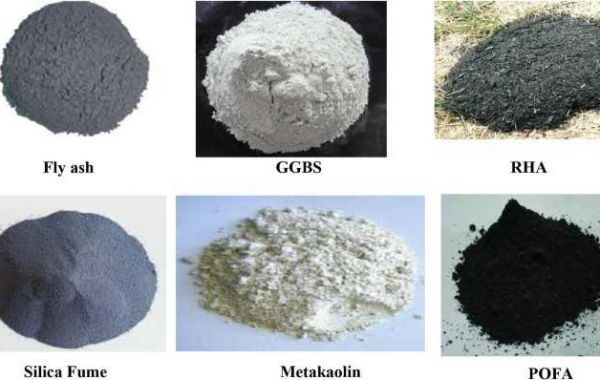Concrete, the cornerstone of modern construction, is often required to be pumped over long distances or to great heights, especially in large-scale projects. The efficiency and effectiveness of placing concrete via pumping can be significantly influenced by its mix design and the use of specific admixtures. Admixtures play a critical role in enhancing the pumpability and placement of concrete, ensuring that it flows smoothly through pipes without segregation or blockages. This article delves into the different Types Of Concrete Admixtures that improve pumpability and placement, their benefits, applications, and how they contribute to the success of construction projects.
Understanding Pumpability in Concrete
What is Pumpability?
Pumpability refers to the ease with which concrete can be conveyed through a pump line and placed at the desired location. For concrete to be pumpable, it must possess specific characteristics:
Flowability: The ability of concrete to flow without segregation.
Cohesiveness: The mixture should remain uniform without bleeding or separation.
Low Viscosity: The concrete should not be too thick to move through pipes.
Challenges in Pumping Concrete
Pumping concrete presents several challenges, such as:
Segregation: The separation of aggregate from the cement paste.
Blockages: Clogs in the pump line caused by improper mix consistency.
Pressure Drops: Significant loss of pressure can impede the flow of concrete.
To overcome these challenges, the use of appropriate admixtures is essential.
Types of Admixtures for Improved Pumpability and Placement
Water-Reducing Admixtures
Plasticizers and Superplasticizers
Plasticizers (water-reducing admixtures) and superplasticizers (high-range water reducers) are used to increase the fluidity of concrete without adding extra water. They help in achieving a desired slump, making the concrete easier to pump and place.
Benefits: Improved flowability, reduced water-cement ratio, enhanced strength, and workability.
Applications: High-rise buildings, bridges, and large slabs where long-distance pumping is required.
Viscosity-Modifying Admixtures (VMAs)
VMAs are used to enhance the viscosity and cohesiveness of concrete. They help prevent segregation and bleeding, ensuring a uniform mix during pumping.
Benefits: Improved cohesiveness, reduced bleeding and segregation, and better surface finish.
Applications: Self-consolidating concrete (SCC), underwater concreting, and complex formwork structures.
Air-Entraining Admixtures
Air-entraining admixtures introduce tiny air bubbles into the concrete mix, which improves its workability and pumpability. These bubbles act as lubricants, reducing friction within the mix and the pump lines.
Benefits: Enhanced workability, reduced bleeding and segregation, and improved freeze-thaw resistance.
Applications: Cold weather concreting, pavements, and structures exposed to freeze-thaw cycles.
Retarding Admixtures
Retarding admixtures slow down the setting time of concrete, providing more time for pumping and placement, especially in hot weather conditions.
Benefits: Extended working time, improved finish quality, and reduced risk of cold joints.
Applications: Large pours, hot weather concreting, and long-distance transport of concrete.
Accelerating Admixtures
Accelerating admixtures speed up the setting time of concrete, making them useful in cold weather or when early strength is required. While not directly related to pumpability, they are beneficial in placement efficiency.
Benefits: Reduced setting time, increased early strength, and faster construction schedules.
Applications: Cold weather concreting, precast concrete, and repairs.
Anti-Washout Admixtures
Anti-washout admixtures increase the cohesiveness of concrete, preventing the loss of cement and fine aggregates during underwater placement. This property can also enhance pumpability by maintaining mix integrity.
Benefits: Improved cohesiveness, reduced washout losses, and better underwater performance.
Applications: Underwater concreting, piers, and marine structures.
Benefits of Improved Pumpability and Placement
Enhanced Construction Efficiency
Admixtures that improve pumpability and placement streamline the construction process by reducing the time and effort required to place concrete. This efficiency translates to faster project completion and lower labor costs.
Better Quality and Durability
By ensuring a uniform and cohesive concrete mix, these admixtures enhance the overall quality and durability of the finished structure. Reduced segregation and bleeding lead to a more homogeneous material with improved long-term performance.
Reduced Equipment Wear and Tear
Admixtures that facilitate smooth concrete flow reduce the wear and tear on pumping equipment. This not only extends the lifespan of the machinery but also minimizes maintenance costs and downtime.
Flexibility in Design and Application
Enhanced pumpability allows for greater flexibility in design, enabling the construction of complex structures and high-rise buildings. It also facilitates the use of advanced concreting techniques such as self-consolidating concrete and underwater placement.
Applications in Modern Construction
High-Rise Buildings
In high-rise construction, concrete must be pumped vertically over significant distances. Superplasticizers and VMAs are crucial in ensuring the concrete remains pumpable and cohesive, preventing blockages and segregation.
Infrastructure Projects
Infrastructure projects such as bridges, tunnels, and highways often require large volumes of concrete to be placed over long distances. Water-reducing admixtures and retarders help maintain the workability of the concrete during transportation and placement.
Marine and Underwater Structures
For marine and underwater structures, anti-washout admixtures are essential. They prevent the loss of cementitious materials during placement, ensuring the integrity and strength of the concrete in challenging environments.
Decorative and Architectural Concrete
In decorative and architectural applications, achieving a smooth and uniform surface finish is critical. Air-entraining admixtures and VMAs enhance the workability and finish quality of the concrete, enabling the creation of intricate designs and surfaces.
Conclusion:
The use of concrete admixtures to improve pumpability and placement is a game-changer in modern construction. These admixtures enhance the flowability, cohesiveness, and workability of concrete, making it easier to transport and place over long distances and complex forms. By leveraging the benefits of water-reducing admixtures, viscosity-modifying agents, air-entraining agents, retarders, accelerators, and anti-washout admixtures, construction professionals can achieve higher efficiency, better quality, and more durable structures. As construction projects become increasingly ambitious and complex, the role of these admixtures in ensuring the successful delivery of concrete structures will only continue to grow.







